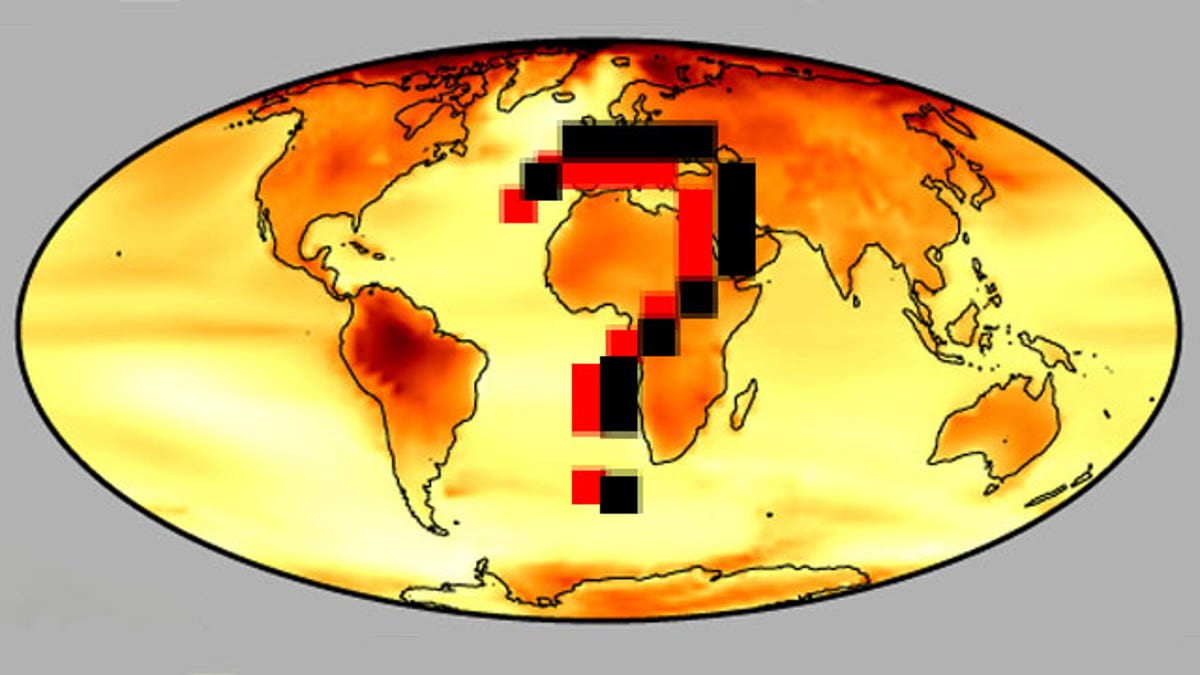
The predicted temperature changes (darker red indicating greater change) due to global warming, based on data that scientists, policymakers and the public are now questioning.
A science blogger uncovered a catalogue of errors in records that form a key part of the scientific evidence for global warming, it emerged Tuesday.
The mistakes, which led to the data from a large number of weather stations being discarded or misused, were overlooked by professional scientists and only discovered when Britain's national weather service, the Met Office, made data publicly available in December after the so-called Climate-gate e-mail scandal.
Although the errors did not alter the bigger picture on climate change, they were seized upon as a further sign that scientific institutions were not sufficiently transparent.
"It makes you wonder how many other problems there are in the data," said John Graham-Cumming, the programmer who spotted the mistakes. "The whole idea of doing science without releasing your data is quite worrying."
After being alerted of the problems last month, the Met Office issued a corrected version of its land-based temperature record on its Web site.
"We are grateful to Dr. Graham-Cumming, but they are quite minor changes," said Peter Stott, head of climate monitoring and attribution at the Met Office.
"It shows how open we are. We have put an exhaustive amount of information out there to show people exactly what we do."
The errors related to the calculation of the average global temperature trend since 1850, based on measurements from land-based thermometers. The record is regarded as one of the most robust pieces of empirical evidence for global warming during the past century.
After trying to reproduce figures shown in scientific publications and on the Met Office Web site, Graham-Cumming identified a number of problems with the way measurements from Australian weather stations were averaged.
He found that data from seven stations was discarded. Data from a further 112 Australian stations, 28 percent of the total, were not being fully included in calculations of year-on-year temperature differences.
"I'm not a climate skeptic, I think it's pretty sure that the world is warming up, but this does show why the raw data and not just the results should be available," he said.
During the checking procedure, Met Office officials discovered further problems with U.S. temperature calculations. They realized that 121 of the U.S. stations did not have unique identifier codes, meaning that data for these stations was either being overwritten or assigned to the wrong location.
When all of the errors identified were corrected, the temperature trend remained well within the 95 percent confidence range of the original plot, meaning that the difference would not be considered scientifically significant.
For more on this story, read the Times of London.




















